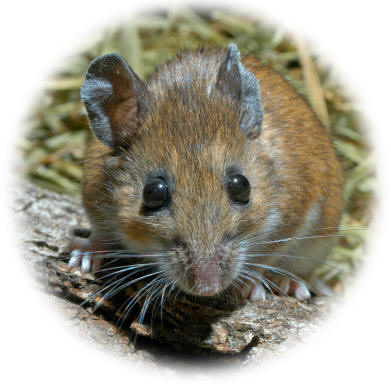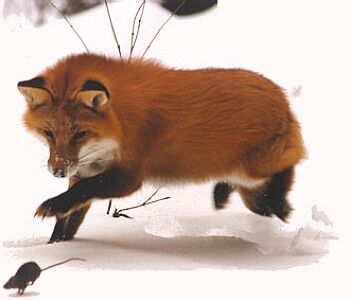
If you use the slightest bit of common sense, the chance of getting rabies from a raccoon, fox, possum, skunk or groundhog is very low, even if you work your terriers to such quarry year-round.
The chance of getting Lyme disease is a little bit higher, but it too is a very rare problem -- far rarer than most people think.
Lyme disease was first identified in Old Lyme, Connecticut in the 1970s. This zoonotic disease is passed to humans by blacklegged deer ticks which are infected with the spiral-shaped Borrelia burgdorferi microbe.
The illness was probably around a long time before being discovered, but prior to the 1970's it was rare enough that no one bothered to name the illness, much less study it.
Then, beginning in the early 1970s, the deer population in the Middle Atlantic and Northeastern United States began to grow rapidly. At the same time, more and more people began moving into the country, generally onto small farms located next to small woods.
Small woods in the Eastern U.S. are often dominated by young oak trees, and these same small woods serve as daytime shelter for fairly dense deer populations of 50-200 animals per square mile (as compared to 25 per square mile in pre-Columbian times).
Very dense deer populations are possible in the eastern U.S. because the deer are able to feed at night in nearby hay, corn and soy fields.
The proximity of houses to shelter-belt forests means deer jungled up in these woods are safe from hunters who cannot legally fire weapons in such close proximity to occupied buildings.
Most people assume deer are the primary reservoir for Lyme disease, but scientists now believe the primary reservoir for is not deer, but something quite a bit smaller -- the whitefooted mouse.
Ticks are not born with Lyme disease. The Borrelia microbe is not passed from female tick to egg, but from Borrelia-infected mammal host to blacklegged deer tick, and from the tick to humans as part of the multiple-host lifestyle of all ticks (for more on that, see >> here).
Almost all whitefooted deer mice have Borrelia coursing through their veins. In addition, almost every tick that bites a whitefooted mouse ends up carrying Borreleia. For reasons not yet understood, other Borrelia-infected animals do not pass Borrelia on quite so easily. While possums, raccoons, fox, coyotes and most birds can carry Borrelia, and often host deer ticks as well, the ticks that feed on these animals become infected with Borrelia only 10% of the time as compared with a 90% infection rate for whitefooted mice.
Clearly, a key component to controlling Lyme disease is reducing the number of whitefooted mice in an area.
Mice populations, it turns out, tend to explode with acorn production which tends to be cyclical. In high-mast years when the ground is littered with vast numbers of acorns, the whitefooted mouse population in small oak woods will explode, and with it the incidence of Lyme disease in an area. Deer coming into these woods pick up the ticks and ensure their dispersal while supplying the tick with a large blood meal (absent a human host).
Obviously, ending acorn production in the Eastern woods is not in the cards. So what else can be done?
One thing that seems to reduce mice populations is to increase the degree of ecological diversity in an area. As the variety of plant sources increase, the popualtions of meso-predators such as possums, raccoons, fox and coyote tends to increase, and with it a decline in mice populations.
Predators, such as fox, are impotant to keeping whitefooted mice populations -- and to some extent Lyme disease -- in check. Fox are highly mobile predators that continuously suppress mice populations all year long. In the absence of mice, fox easily switch to berries, crickets and grasshoppers, young rabbits, voles, and even roadkill and garbage. When mice populations do rise, however, a few red fox can go a long way towards knocking their numbers back down again.
How many mice can a fox eat in a year? If it eats little else, a fox can knock off about 5,000 mice a year. That's not enought to eliminate Lyme disease in an area, but it can have a significant impact, and every little bit helps.
What else can be done? In many areas more deer culling needs to be done, especially of does. With a reduction in deer densities, forest understory has a chance of growing back in, and with it will come an increase in bird populations and other non-mouse fauna.
Such simple precautions such as spraying your pants with bug spray before going out walking in forest and field can help reduce the chance of tick-borne infection quite a lot, as can mowing walking paths short. Move brush piles and firewood stacks away from the house as they are havens for mice populations. After returning from a day in the field, check yourself over for ticks, paying especially close attention to areas you do not normally look at, such as the back of your legs and your back and neck.
If you find a tick, do not worry -- a tick has to feast on you for three days or so before it is able to transmit Borrelia. If a tick bite, or a bite from an unknown bug, develops a large red ring around it, see a doctor immediatly or (if you have doxycline in your vet kit) take a 3-day regime of doxycline. Lyme disease generally very easy to treat in its early stages with a simple one or two-week regime of antibiotics.
And, of course, practice agressive flea- and tick-prevention on your dogs. I hunt most weekends and generally wash the dogs with a low-cost flea shampoo after they return. A few days later I look them over pretty carefully to see if they have any ticks on them that I might have missed while washing them (it helps to have smooth coated dogs!). Other folks use Frontline. Whatever works for you is fine.
The most important element of flea and tick control is vigilance -- paying close attention, on a daily basis, to your dogs. Simply running a hand over their coats once a day will tell you a lot, and not just about ticks, but about weight gain and muscle tone as well.
 The Red Fox: the ultimate weapon of mouse destruction.
The Red Fox: the ultimate weapon of mouse destruction..
No comments:
Post a Comment